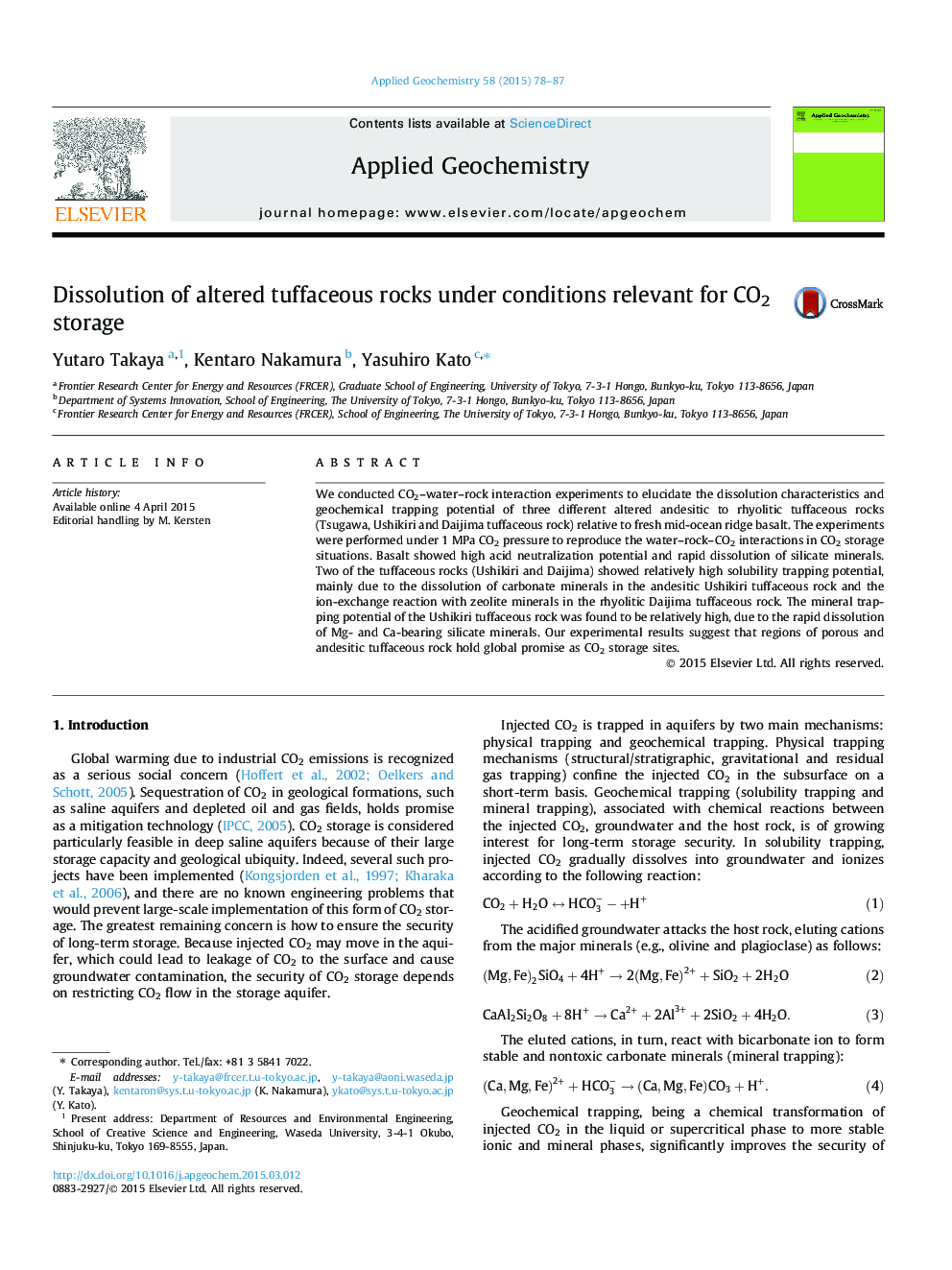| Article ID | Journal | Published Year | Pages | File Type |
|---|---|---|---|---|
| 4435655 | Applied Geochemistry | 2015 | 10 Pages |
•CO2–water–rock reaction experiments were conducted using basalt and tuffaceous rocks.•Andesitic tuffaceous rock has high geochemical trapping potential.•Andesitic tuff formations may be promising CO2 storage sites of global importance.
We conducted CO2–water–rock interaction experiments to elucidate the dissolution characteristics and geochemical trapping potential of three different altered andesitic to rhyolitic tuffaceous rocks (Tsugawa, Ushikiri and Daijima tuffaceous rock) relative to fresh mid-ocean ridge basalt. The experiments were performed under 1 MPa CO2 pressure to reproduce the water–rock–CO2 interactions in CO2 storage situations. Basalt showed high acid neutralization potential and rapid dissolution of silicate minerals. Two of the tuffaceous rocks (Ushikiri and Daijima) showed relatively high solubility trapping potential, mainly due to the dissolution of carbonate minerals in the andesitic Ushikiri tuffaceous rock and the ion-exchange reaction with zeolite minerals in the rhyolitic Daijima tuffaceous rock. The mineral trapping potential of the Ushikiri tuffaceous rock was found to be relatively high, due to the rapid dissolution of Mg- and Ca-bearing silicate minerals. Our experimental results suggest that regions of porous and andesitic tuffaceous rock hold global promise as CO2 storage sites.
